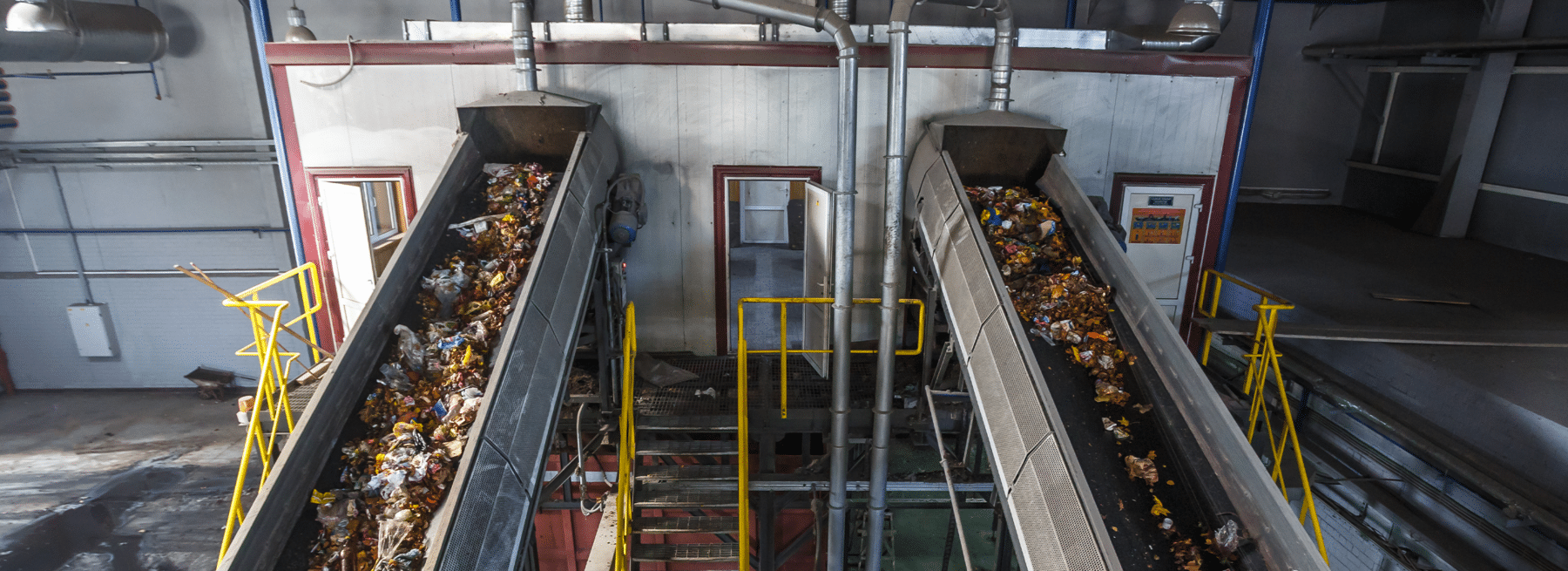Waste, recycling and scrap facilities are at a high risk of fires. All it takes is one spark to the fluff pile and there will be flames. These can be aggressive and hard for the fire department to put out. Unfortunately, the number of scrap facility fires is climbing. In Waste Today Magazine, Alex Kamczyc says there was an increase in reported fires in 2022 with 390 incidents when compared to 367 incidents in 2021. Both represent reported fires in the U.S. and Canada.
The story references the Raleigh, North Carolina-based Environmental Research and Education Foundation that reported more than 30% of North American facilities had a two-plus alarm fire in 2022. Waste, paper, and plastic facilities experienced a 19% increase, organics facilities had a 23% increase, and scrap metal had a 3% increase in fire incidents.
It goes on to say half of the fires are due to lithium-ion batteries. The other half of the fires are caused by accelerants, propane tanks, chemicals, flares, cigarettes, and hot charcoal.
Some of these incidents started with a fluff pile. A St. Louis scrap facility’s fluff pile spontaneously burst into flames per a 5 On Your Side story. Cherry Hill Courier-Post‘s Phaedra Trethan reported on the third major fire at a New Jersey automotive recycling facility in a 20-month period. This, too, started as a fire in a pile of fluff. The story said that it took three engine companies and one ladder company to contain the fire that was “a nuisance to extinguish.”
“A massive fire broke out at the site in January 2021, sending plumes of smoke into the air. High winds and low temperatures, along with the size of the pile of industrial waste, hampered firefighters’ efforts to battle the blaze,” Phaedra Trethan writes. “In the aftermath of that fire, city, state, and county officials vowed to hold the company accountable and EMR promised to take steps to prevent future fires. Another fire broke out in February 2022, again sending smoke rising high into the air and rattling residents’ nerves.”
These fires aren’t just putting a company’s reputation and business at risk. Kamczyc writes that the 2022 fires caused 56 direct and indirect injuries and two fatalities. They had to halt operations completely. The New Jersey scrap facility affected neighbors as they complained about smoke, air quality, and noxious odors. A few indicated they had to leave their homes.
Furthermore, the Occupational Safety and Health Administration (OSHA) has advised the New Jersey scrap facility to be held accountable with a $1.2 million fine. OSHA explains the reasoning for the fine as the company did not protect employees or take measures to prevent repeated fires.
How to Protect Scrap Facilities
In a Recycling Today article, Lauren Rathmell quotes Jim Wiseman, executive vice president of Smart Recycling Management on how to mitigate risk with scrap facility fires. Wiseman urges operators to follow good housekeeping practices to store material that is going to be shredded as well as already shredded in “well-managed piles.”
Another safety concern is that flammable remnants of unprocessed scrap are often thrown out. This is why it’s critical to maintain a shredder. Wiseman recommends driving by the yard at night to ensure there is no more fluff on the ground at the end of the day.
It also helps to start the day by doing a look around to ensure the yard looks organized. The start and the end of the day are the best times to do this evaluation when the equipment stops running and there are no noises or people around.
Shredders are a big fire risk. Therefore, another crucial aspect of scrap yard safety is machine maintenance. It’s so important the technicians and operators who work with shredders and maintenance issues are trained and qualified to do the job. All machinery and large equipment need to be checked. They may have a start-up and shutdown process. This must be followed and spot-checked.
Executive Vice President of Smart Recycling Management Jim Wiseman tells Recycling Today that proper maintenance requires a documented maintenance plan and a checklist system. This checklist should have the steps for starting up, using it, and shutting down. It’s possible for one machine to cause other machines to shut down.
Ensuring the safety of a recycling and scrap yard and preventing fires requires creating and maintaining a company culture of safety, maintenance, and risk mitigation according to Wiseman. Fortunately, there is technology that can help with this process. It can watch over the property, monitor for fires, spot fluff problems, and keep you out of OSHA’s crosshairs.
Why Use Thermal Cameras in Recycling and Scrap Yards?
Recycling and scrap yards aren’t just at risk for fires. They are also vulnerable to theft, vandalism, and other security threats. To combat these challenges, many recycling and scrap yards turn to advanced technology, such as thermal cameras.
Thermal cameras, also known as infrared cameras or thermographic cameras, have become valuable tools for securing recycling and scrap yards for the following compelling reasons.
Unmatched detection capabilities
Thermal cameras detect infrared radiation emitted by objects based on their temperature differences. This technology allows them to help identify intruders or potential threats. They can do this in complete darkness or adverse weather conditions like rain, fog, or snow. Their detection capability makes thermal cameras a reliable option for surveillance.
Greater visibility
Unlike traditional security cameras, thermal cameras do not rely on visible light. It means glare, shadows, and low-light solutions don’t affect the camera views. This helps ensure they provide consistent and clear images regardless of the environmental and weather conditions. This is critical for monitoring large outdoor areas like recycling and scrap yards.
Cost-effective solution
Once upon a time, thermal cameras were considered a premium security solution. Fortunately, advancements in technology have made them affordable. The long-term cost savings in reduced false alarms, maintenance, and energy consumption make them a cost-effective choice for recycling and scrap yard owners.
Immediate alerts
Thermal cameras can be integrated with trained human monitoring and sophisticated video analytics software that can help recognize human and vehicle movement patterns. When the system detects suspicious activity, it can trigger real-time alerts to a trained monitoring operator. This helps leads to a swift response and intervention.
Benefits of Thermal Cameras for Recycling and Scrap Yards
Thermal cameras are the preferred choice for protecting recycling and scrap yards and their benefits outshine other security options. Here are the advantages of using thermal cameras in recycling and scrap yards.
Deterring crimes
One of the primary concerns for recycling and scrap yards is the theft of valuable materials. They’re a popular target for theft due to the metals and other materials that sell for a lot of cash. Thermal cameras can help detect intruders and potential thieves. This is the case in areas with no artificial lighting. This proactive surveillance helps deter criminal activities and protect valuable assets.
Reducing false alarms
Unlike traditional cameras that may trigger false alarms due to weather conditions or animals, thermal cameras are less susceptible. This reduces the likelihood of wasting resources on false alarms and helps ensure that security personnel can focus on genuine threats. That’s why it’s important to have a trained monitoring operator working in conjunction with video analytics. They can help determine whether it’s a false alarm or an emergency.
Improving operational efficiency
In addition to boosting security, thermal cameras can improve operational efficiency. They can monitor equipment and machinery, identifying overheating components or potential maintenance issues before they escalate into costly problems. This proactive approach can save money and minimize downtime. Trained monitoring operators can watch for and report machine issues or noncompliance with processes.
Complying with regulatory requirements
Recycling and scrap yards often need to adhere to environmental regulations and safety standards. Many legislators have been creating or updating laws regarding sales of stolen products like catalytic converters. Also, thermal cameras can help ensure compliance by monitoring emissions and potentially hazardous situations, providing a safer and more environmentally friendly workplace.
Why Thermal Cameras Trump Other Options
While there are various security options available for recycling and scrap yards, thermal cameras with remote monitoring done by humans and analytics stand out for the following advantages.
Infrared vision
Traditional security cameras rely on visible light, which can be easily compromised by darkness or adverse weather. And there have been a lot more extreme weather situations in recent years. In contrast, thermal cameras excel in low-light and challenging weather conditions, helping to ensure uninterrupted surveillance.
Low false alarms
Motion sensor lights or traditional cameras can generate false alarms. When they do, they disrupt the business and could potentially cause security personnel to start ignoring them. Thermal cameras with remote monitoring by trained monitoring operators and analytics can reduce false alarms. They help confirm whether there is an emergency or a false alarm.
Versatility
Thermal cameras can monitor a wide range of environments including open yards, indoors, parking areas, and more. Therefore, they can provide a comprehensive security solution that is not limited by geography or lighting conditions.
Find the Right Scrap Yard Thermal Camera Service Provider
Incorporating thermal cameras into the security infrastructure of recycling and scrap yards can be a smart and effective investment. These cameras offer unmatched detection capabilities, cost savings, and operational efficiency. That’s why the preferred choice for protecting valuable assets and ensuring compliance with regulations.
As the recycling industry continues to grow, thermal cameras will play an increasingly vital role in safeguarding these facilities and their contributions to safety and environmental sustainability. Hopefully, a fluff fire will never happen. However, in case they do, thermal cameras can help detect them faster.
In the search for a video security company, look for security vendors with scrap yard security experience. You can check to see if the video cameras provide clear views by asking to review their scrap yard surveillance videos.
Stealth Monitoring’s consultants can design the right-sized solution that meets your security requirements and budget. They’ll listen to your concerns and propose a customized solution that can meet your requirements.
Scrapyard businesses need to explore remote video surveillance using thermal cameras to help ensure they can catch potential fire hazards and fires early. They’ll help protect your assets and employees. And finally, when you work with a company like Stealth, you could see a return on your investment within months. To learn more, pick up your copy of How to Protect Your Scrap Metal Facility Assets to Gain a Fast ROI, or contact us.
Texas Private Security License Number: B14187
California Alarm Operator License Number: ACO7876
Florida Alarm System Contractor I License Number: EF20001598
Tennessee Alarm Contracting Company License Number: 2294
Virginia Private Security Services Business License Number: 11-19499
Alabama Electronic Security License # 002116
Canada TSBC License: LEL0200704

